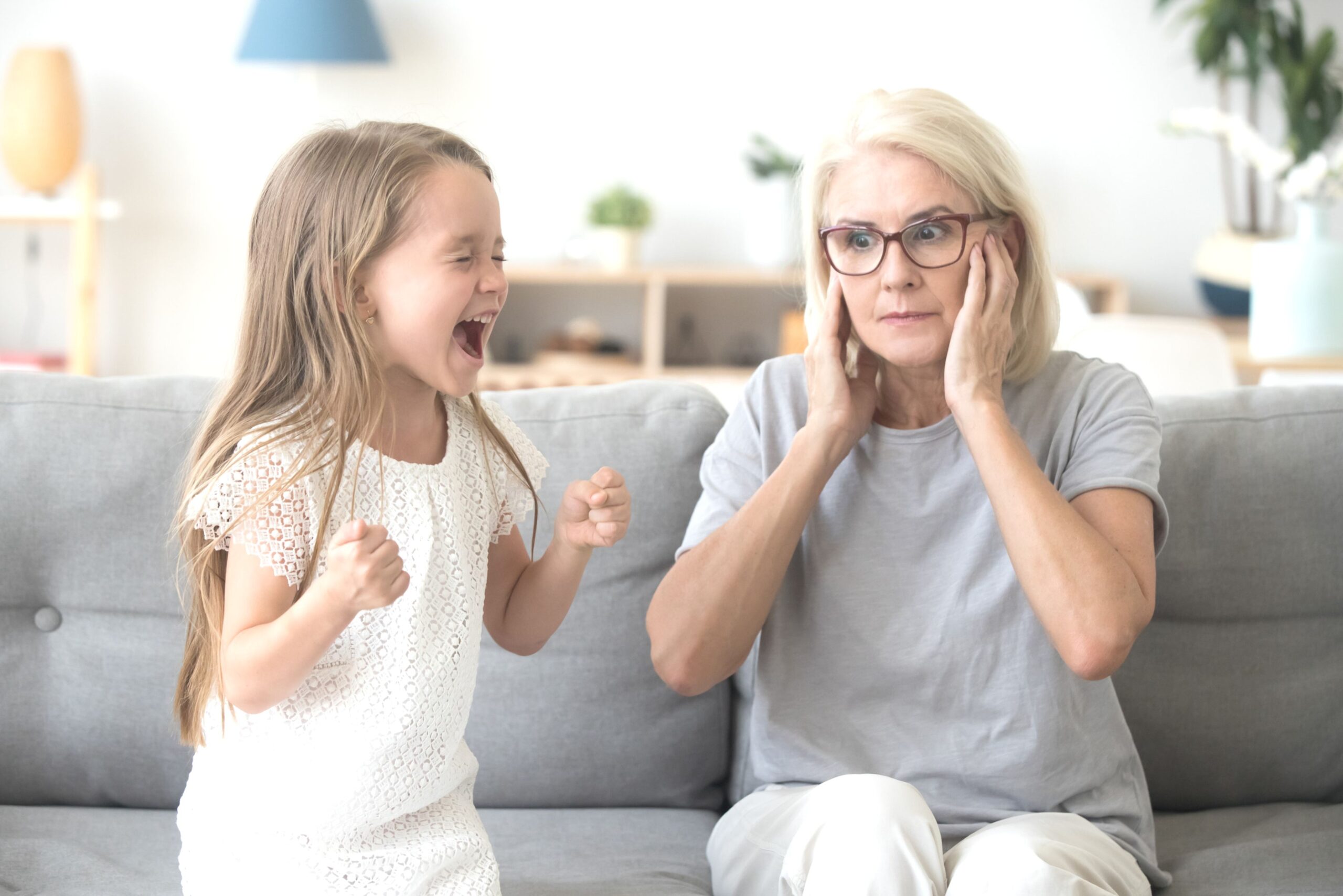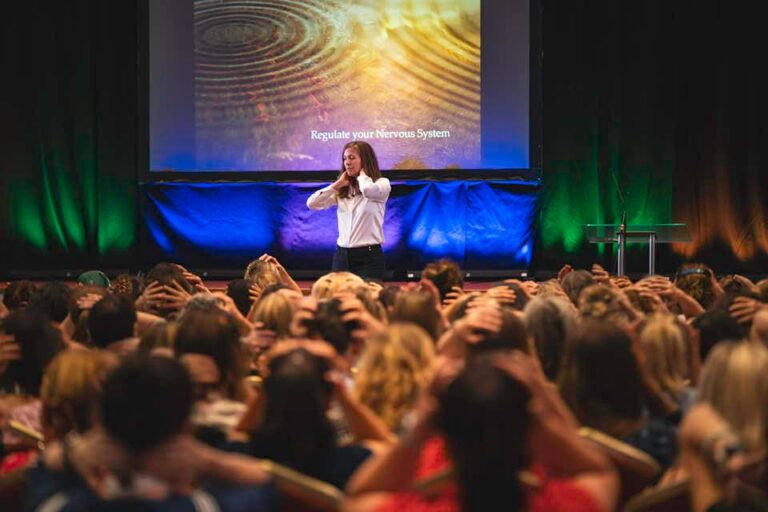Have you heard the idea that a child needs a calm adult in order to regulate? The idea that an adult’s “calm” presence is the answer to regulating a child when they’re dysregulated?
I work with many teachers, child therapists and parents (including myself), who courageously tell me that they carry some level of shame inside because they can’t quite pull this off. And it makes sense! Staying truly calm when a child is activated, screaming, throwing a tantrum, doing something scary, or even shutting down and withdrawing in front of you is really hard, if not nearly impossible because inside you likely feel scared, overwhelmed, or helpless.
So what if trying to be calm isn’t quite the point? What if calm isn’t exactly what is needed in the moment to help a child regulate and, more importantly, what if the ongoing effort to try and remain calm is actually getting in the way?
Here is why…
When another person gets dysregulated, we are designed to feel the dysregulation too! Think of it like your nervous system and their nervous system are saying “hello” to each other. We can partly thank our mirror neuron system for this phenomenon. When we see someone experiencing emotions, we actually imagine having the same experience. The wisdom in this is that it supports our ability to attune and have empathy. It also gives us information about what might be going on for the other person.
One of the other reasons we get dysregulated is because our brains are constantly scanning our environment for safety clues and whether or not there is a challenge to overcome. When your child is physically overwhelming you or escalating quickly, your brain literally interprets the situation as potentially dangerous which, in turn, revs up your system or moves you into shutdown. This is you trying to protect yourself!
Imagine this…
Your child is emotionally escalating in front of you and starts to scream. Now imagine that this is happening in a public place where others can hear and possibly see what is happening. If you’re honest with yourself, you don’t feel calm inside when this happens! Inside you’re likely feeling some degree of anxiety, helplessness, embarrassment, or maybe even anger towards your child. Likely you have an urge inside to calm your child down and make the screaming stop. These urges and feelings in you are what you’re supposed to be feeling based on the information you’re experiencing- your nervous system is saying hello to your child’s nervous system and you’re feeling their activation. You are also registering the situation as challenging. Yet, you’ve been told that somehow you need to stay very calm while all of this is happening. How is that possible when inside you also feel like screaming?
There are a few important things that happen when we try to look calm when we actually are not feeling calm. The first is we are likely thinking that if the child simply sees us look calm, then that is enough. The problem with this is that it potentially activates one of the clues the brain is scanning for indicating that things are not safe, because things are incongruent. This can lead to further escalation. Our brains look for things that don’t make sense, because incongruence is actually registered as a potential threat! So when we’re feeling one way and pretending to look a different way on the outside, we don’t make sense. Children are smart, intuitive and they know when we aren’t telling the truth. Like it or not, children can read our body language and non-verbal cues, listen to the changes in our voice and track to see if our emotional affect makes sense.
The second thing to understand is when a child is in a high state of activation, they have disconnected from themselves. They don’t know how to access the part of themselves that is able to modulate their emotions. In a sense, they’re screaming out and saying, “Can I please borrow someone’s nervous system and ability to connect, so I can get back to myself!” The same is true for us, when we are not congruent we are also disconnected from ourselves, making it harder for us to work with our own activation and ultimately theirs.
And this right here is what regulation and co-regulation is all about: connection, not calm. Regulation has been paired with the goal of getting calm, which has contributed to the confusion and misunderstanding about what to do when a child is highly dysregulated in front of you when you’re struggling to feel calm inside. But calm was never it. The real goal was connection.
To regulate actually means to have a mindful moment of connection to yourself in the midst of the anxiety, sadness, overwhelm, fear or whatever activation is present in the moment (e.g., the ability to take a breath while feeling anxious – or mindfully feeling the sensations in the body while feeling sad – or the ability to talk out loud or name an experience while feeling overwhelmed or frustrated) – It doesn’t mean to pretend to have an experience that you aren’t having- quite the opposite. In a moment of regulation you’re allowing yourself to feel what is uncomfortable while simultaneously doing something that helps you to stay present and access the part of your own nervous system that allows you to stay steady within the activation. And it is this mindful connection to yourself in the midst of all of the activation that ultimately helps regulate the child.
But if you are pretending to be calm on the outside when inside you actually don’t feel calm, not only are you potentially registering as incongruent to your child (which can escalate the situation), but your child is also going to have a hard time grabbing hold of the part of you that is able to stay a little more steady in the midst of the emotions. In order for the child to become more steady internally, they need to access their own regulatory system and connect back to themselves. It’s in that moment your child can have a little more governance over the activation that is happening inside, and maybe eventually arrive at calm.
The next time your child is escalating in front of you and you automatically assume you need to stay calm, try replacing that assumption with “connect to myself so that I can help my child connect” in your mind. Remember, you are human and going to get stirred up. The key here is to connect in the midst of the activation – not pretend like it isn’t happening. Maybe take some deep breaths, name your experience out loud (I am feeling overwhelmed- “I” statements are important here), get a drink of water, hum, move your body, put pressure on your arms or squeeze your hands, or whatever it is that helps you connect back to yourselves and not lose yourself emotionally.
When you read or hear something that states a child needs a calm adult when they’re having a hard time or are dysregulated, pause for a second and understand that what a child really needs in order to regulate is an adult that can connect to themselves while being honest about their internal experience. We don’t need adults that run away from feelings, but adults that can be in these feelings without losing themselves.
Lisa Dion, LPC, RPT-S
Would you like to learn Synergetic Play Therapy? Join us for one of our level 1 Introduction to Synergetic Play Therapy programs, online or in person. Discover more about this program here.
Additional Resources:
- Lessons from the Playroom Episode 118: How Trying to be Calm Gets in the Way of Regulation
- Be Yourself – Therapist Authenticity in the Playroom (blog)
- What Regulation Really Means (blog)
- What Emotional Intelligence Really Means (blog)
- Regulation is Not Better than Dysregulation (short video)
- What Regulation Actually Means (short video)
- FREE Resources including Nervous System handout with lots of ideas for ways to regulate




